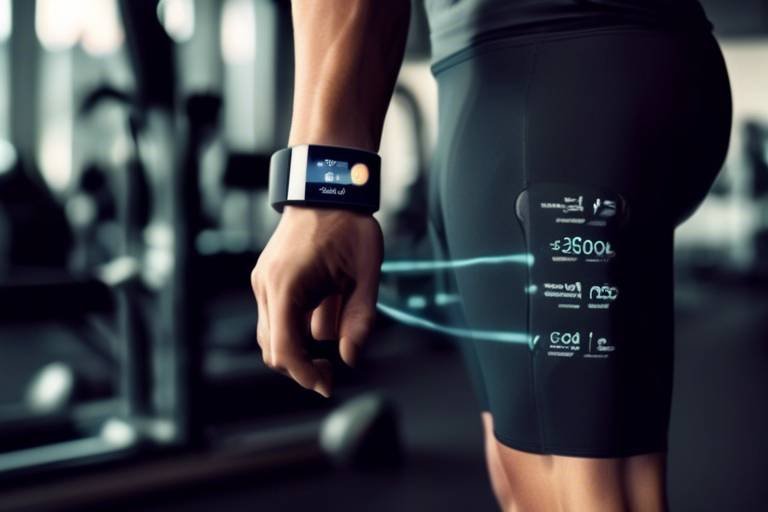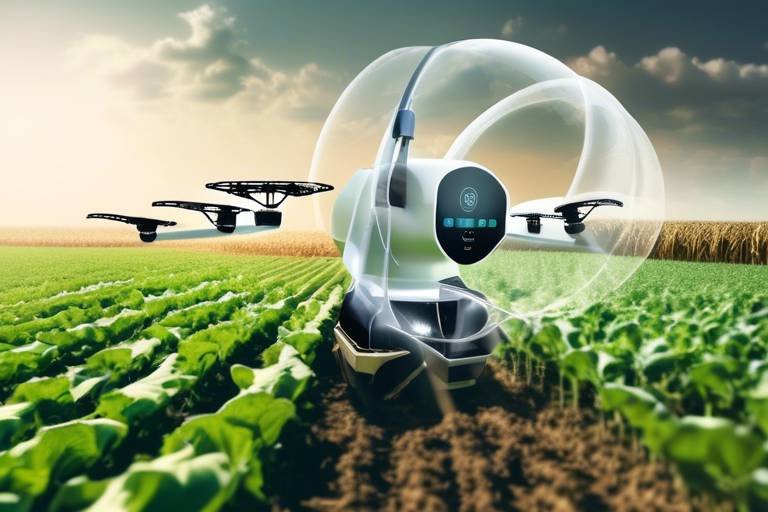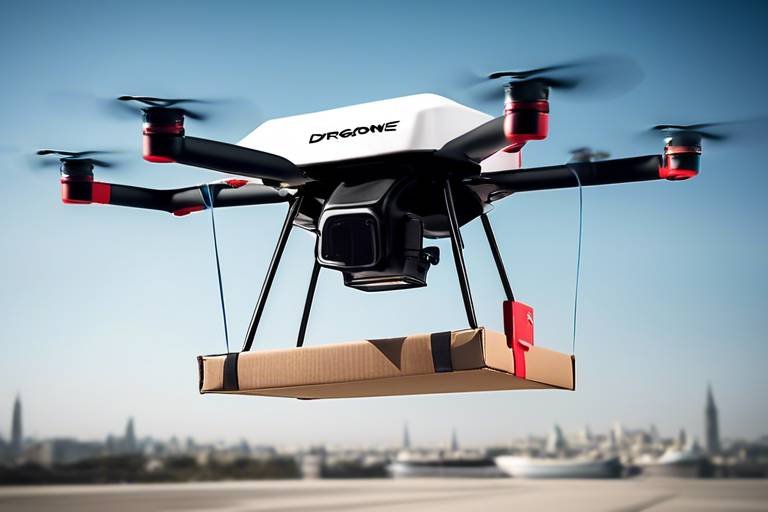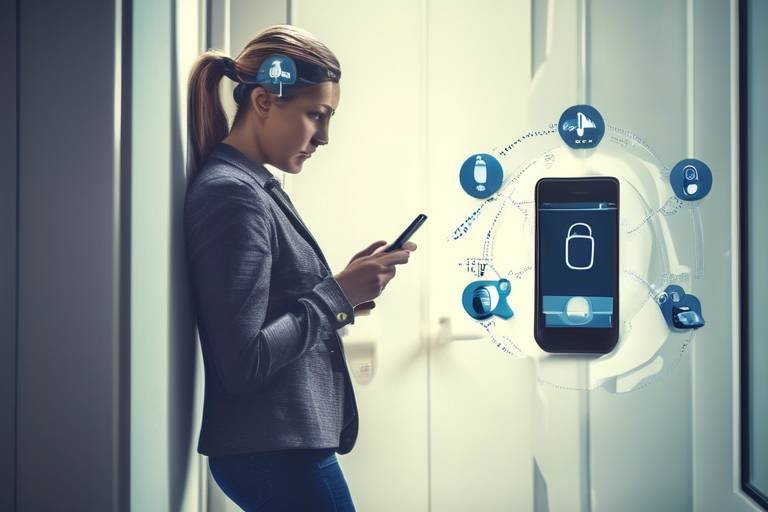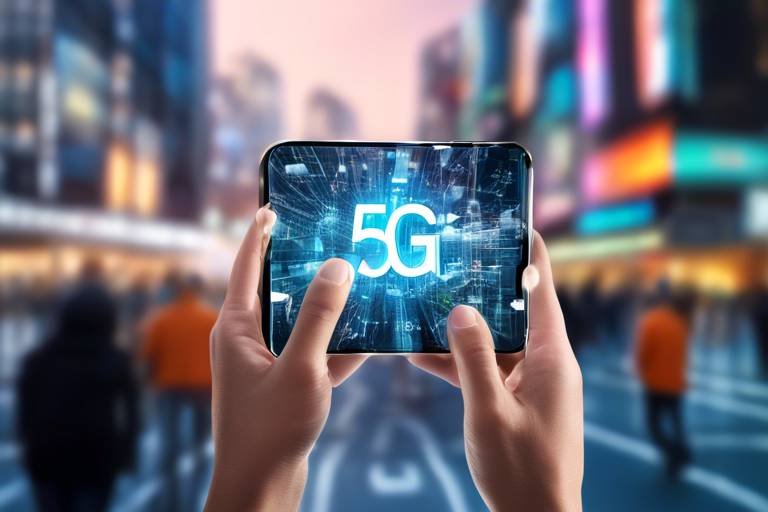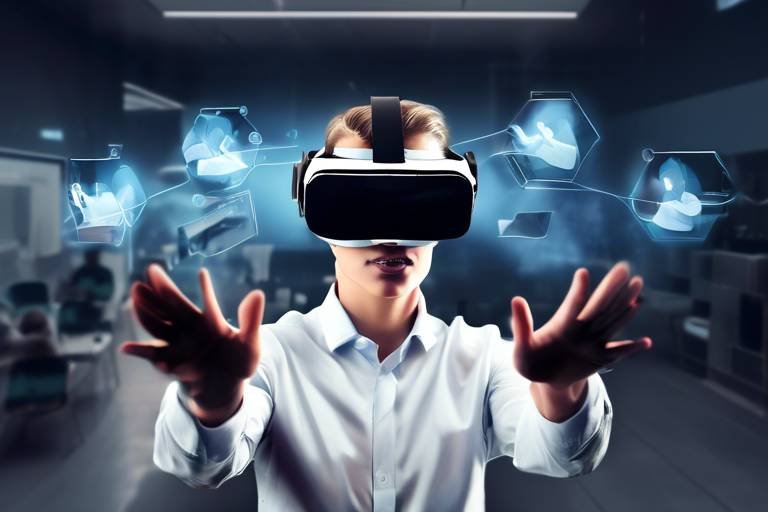The Future of Wearable Technology in Health
The world of healthcare is undergoing a seismic shift, and at the forefront of this transformation is wearable technology. Imagine being able to monitor your health in real-time, with devices that can track everything from your heart rate to your sleep patterns, all from the comfort of your wrist. This isn’t just a dream; it’s the reality that wearable technology is creating. With innovations popping up every day, these gadgets are not merely accessories but essential tools that are revolutionizing how we approach health management.
Wearable technology encompasses a wide array of devices, including smartwatches, fitness trackers, and even advanced medical devices that can send vital health data directly to healthcare providers. The implications of this technology are profound. For instance, instead of waiting for a scheduled appointment to learn about your health metrics, you can now receive updates and alerts instantly. This immediacy not only empowers individuals to take charge of their health but also fosters a proactive approach to wellness.
As we delve deeper into this topic, we will explore the advancements in wearable sensors, their impact on chronic disease management, and the critical issues surrounding data privacy. We will also peek into the future trends that promise to further enhance the capabilities of wearable health tech. This journey into the future of wearable technology is not just about gadgets; it’s about creating a healthier world where individuals are more informed and engaged in their health journeys.
So, what does the future hold for wearable technology in health? The potential is limitless. With advancements in artificial intelligence and the Internet of Things, we are on the brink of a healthcare revolution that promises to make health monitoring not only more efficient but also more personalized. Are you ready to embrace this change? Let’s dive in!
- What types of wearable technology are available for health monitoring? Wearable technology includes devices like smartwatches, fitness trackers, and specialized medical devices that monitor various health metrics.
- How can wearable technology improve chronic disease management? By providing continuous monitoring and personalized feedback, wearables help individuals manage chronic diseases more effectively, leading to better health outcomes.
- What are the privacy concerns associated with wearable devices? As wearables collect sensitive health data, there are significant concerns regarding data privacy and security, necessitating robust protective measures.
- How does AI enhance wearable health technology? AI algorithms analyze health data from wearables, offering predictive insights and tailored recommendations based on individual health profiles.

Advancements in Wearable Sensors
The world of wearable technology is evolving at an astonishing pace, and at the heart of this evolution are . These tiny yet powerful devices are transforming how we monitor our health, providing us with real-time data that was once only available in clinical settings. Imagine wearing a device that can track your heart rate, sleep patterns, and even stress levels, all while you go about your daily life. This is no longer a dream but a reality thanks to recent innovations in sensor technology.
Modern wearable sensors have become more accurate and reliable than ever before. With the integration of advanced materials and miniaturized electronics, these sensors can monitor vital signs with precision, offering insights into our health like never before. For instance, many wearables now feature sensors that can detect changes in body temperature, blood oxygen levels, and even hydration status. This level of monitoring is crucial for early detection of potential health issues, allowing users to take proactive measures.
One significant advancement is the development of biometric sensors, which can analyze physiological signals to provide a comprehensive view of a user’s health. These sensors can measure:
- Heart Rate Variability: A key indicator of cardiovascular health.
- Electrodermal Activity: Useful for assessing stress levels.
- Movement Patterns: Important for tracking physical activity and recovery.
Moreover, the integration of machine learning algorithms into wearable devices has enhanced their capabilities. These algorithms analyze the data collected by sensors to identify patterns and trends in user health. For instance, if a wearable detects an unusual spike in heart rate during a period of rest, it can alert the user to potential issues. This kind of proactive monitoring empowers individuals to take charge of their health.
Additionally, the miniaturization of sensors has led to the creation of more discreet and comfortable wearable devices. No longer do users have to wear bulky gadgets; instead, they can opt for sleek designs that fit seamlessly into their daily attire. This change not only improves user experience but also encourages greater adoption of wearable technology. After all, if a device is comfortable and stylish, people are more likely to wear it consistently, leading to more accurate data collection.
In summary, the advancements in wearable sensors are paving the way for a new era in health monitoring. By providing users with real-time data and insights, these technologies are not just enhancing personal health management but also contributing to a broader understanding of health trends in populations. As we continue to innovate, the potential for wearable sensors to transform healthcare is limitless.

Impact on Chronic Disease Management
Wearable technology is revolutionizing the way we approach chronic disease management, and it’s doing so in ways that are both exciting and transformative. Imagine having a personal health assistant that never sleeps, constantly monitoring your vital signs, and providing real-time feedback. This is the reality that wearable devices are creating. With the ability to continuously track health metrics such as heart rate, blood pressure, and glucose levels, these devices are empowering patients to take control of their health like never before.
One of the most significant impacts of wearable technology is its role in enhancing patient engagement. For individuals managing chronic conditions, staying informed about their health status is crucial. Wearable devices enable users to receive immediate notifications about their health metrics, which can prompt timely interventions. For instance, a patient with hypertension can receive alerts if their blood pressure readings exceed recommended levels, allowing them to take corrective actions before a crisis occurs.
Moreover, the integration of wearables into chronic disease management fosters a more personalized approach to healthcare. Patients can receive tailored feedback based on their specific health data, which can lead to better adherence to treatment plans. For example, a diabetes management device can provide insights on how certain foods affect blood sugar levels, enabling users to make informed dietary choices. This level of personalization not only improves health outcomes but also enhances the overall patient experience.
To illustrate the impact of wearables on chronic disease management, consider the following table that highlights key benefits:
| Benefit | Description |
|---|---|
| Continuous Monitoring | Real-time tracking of vital signs helps in early detection of potential health issues. |
| Personalized Feedback | Users receive tailored advice based on their unique health data, improving adherence to treatment. |
| Increased Engagement | Constant notifications and insights empower patients to take charge of their health. |
In addition to these benefits, wearable technology also facilitates better communication between patients and healthcare providers. Many wearables can sync data with mobile applications, allowing healthcare professionals to monitor their patients' health remotely. This not only saves time for both parties but also enables providers to make informed decisions based on accurate, real-time data. For example, a doctor can adjust a patient’s medication dosage based on the data collected from their wearable device, ensuring that the treatment is as effective as possible.
However, it’s important to note that while the benefits of wearable technology in chronic disease management are substantial, there are also challenges to consider. Issues such as data privacy, security, and the need for user education are paramount. Patients must be informed about how their data is used and protected, fostering trust and encouraging more widespread adoption of these innovative tools.
In conclusion, wearable technology is not just a trend; it’s a game-changer in chronic disease management. By providing continuous monitoring, personalized feedback, and enhancing communication between patients and healthcare providers, these devices are paving the way for more effective health management strategies. As we move forward, it’s essential to address the challenges while embracing the immense potential that wearable technology holds for the future of healthcare.
- What types of chronic diseases can wearable technology help manage?
Wearable technology can assist in managing various chronic diseases, including diabetes, heart disease, hypertension, and respiratory conditions. - How do wearables improve patient engagement?
Wearables provide real-time feedback and notifications, which encourage patients to stay informed and proactive about their health. - Are there any privacy concerns with wearable technology?
Yes, data privacy and security are critical issues. It's essential for users to understand how their data is collected, stored, and used. - Can healthcare providers access data from wearable devices?
Many wearable devices allow for data sharing with healthcare providers, enabling better monitoring and personalized care.

Diabetes Management
Managing diabetes has traditionally been a challenging journey, often requiring constant vigilance and lifestyle adjustments. However, with the advent of wearable technology, this landscape is changing dramatically. Wearable devices designed specifically for diabetes management have emerged as game-changers, offering innovative solutions that empower patients to take control of their health. One of the most significant advancements is the continuous glucose monitoring (CGM) system, which allows users to track their blood sugar levels in real-time. This technology eliminates the need for frequent finger pricks and provides a more comprehensive view of glucose fluctuations throughout the day.
Imagine waking up each morning with a device that not only tracks your glucose levels but also alerts you when your blood sugar is too high or too low. This kind of proactive management can significantly reduce the risk of complications associated with diabetes. For instance, users can receive notifications on their smartphones, enabling them to make informed decisions about their diet and insulin intake. These devices are not just about monitoring; they are about creating a dynamic feedback loop that engages patients in their health journey.
Moreover, many of these wearables come equipped with mobile applications that provide comprehensive data visualization. Users can view trends over time, understand how their lifestyle choices impact their glucose levels, and even set personalized goals. This level of insight is invaluable for maintaining optimal health. For example, a user might discover that their blood sugar spikes after certain meals, prompting them to adjust their diet accordingly. The integration of technology into diabetes management not only simplifies the process but also promotes a deeper understanding of one's health.
Another remarkable feature of some wearable devices is the incorporation of community support. Many platforms connect users with others facing similar challenges, allowing them to share experiences, tips, and encouragement. This sense of community can be incredibly motivating for individuals managing diabetes. It's like having a support group right on your wrist! Users can exchange advice on everything from meal planning to exercise routines, fostering a collaborative approach to health management.
As we look to the future, the potential for wearable technology in diabetes management is enormous. With ongoing advancements in sensor technology and data analytics, we can expect even more sophisticated devices that not only monitor glucose levels but also provide predictive insights. Imagine a wearable that can analyze your eating habits and suggest meal plans tailored to your specific needs. The integration of artificial intelligence into wearables is paving the way for a more personalized approach to diabetes care, making it easier for individuals to lead healthier lives.
Q1: How does continuous glucose monitoring work?
A1: Continuous glucose monitoring involves a small sensor placed under the skin that measures glucose levels in the interstitial fluid. This data is sent to a device or smartphone app, providing real-time insights.
Q2: Can wearable devices help prevent diabetes complications?
A2: Yes, by providing real-time monitoring and alerts, wearable devices can help users manage their blood sugar levels more effectively, reducing the risk of complications associated with diabetes.
Q3: Are there any privacy concerns with using wearable technology?
A3: Yes, users should be aware of data privacy risks. It's essential to choose reputable brands that comply with regulations and prioritize user data protection.

Integration with Mobile Apps
In today's fast-paced world, the integration of wearable devices with mobile applications has become a game-changer in health management. Imagine having a mini health assistant right in your pocket, ready to provide you with real-time data and insights about your body! This seamless connection not only enhances the functionality of wearable devices but also transforms how users interact with their health metrics. With just a few taps on a smartphone, users can access a treasure trove of information, making health management more engaging and user-friendly.
One of the most significant advantages of mobile app integration is the ability to visualize health data effectively. Wearables can track various health metrics, such as heart rate, sleep patterns, and physical activity levels. When this data syncs with a mobile app, users can see trends and patterns over time, allowing them to make informed decisions about their health. For example, a user might notice that their sleep quality improves when they engage in regular exercise, prompting them to maintain a consistent workout routine.
Moreover, many mobile apps connected to wearables offer personalized feedback and recommendations. This can be incredibly motivating for users. For instance, if a wearable device detects that a user’s heart rate spikes during certain activities, the app can suggest modifications or offer tips on how to manage stress. These tailored insights not only empower users to take control of their health but also foster a sense of accountability.
Additionally, some applications feature goal-setting capabilities that encourage users to achieve their health objectives. Users can set daily step targets, calorie intake goals, or even hydration reminders. The app can then send notifications to keep users on track. This feature acts like a virtual coach, nudging users towards healthier habits. The interactive nature of these apps makes health management feel less like a chore and more like an engaging challenge.
But it’s not just about individual health; these mobile apps often include community support features. Users can connect with friends or family members, share their progress, and even participate in challenges together. This social aspect can significantly enhance motivation and adherence to health plans. After all, who doesn’t love a little friendly competition or encouragement from loved ones?
In summary, the integration of wearable devices with mobile apps is revolutionizing health management by providing users with comprehensive data visualization, personalized feedback, goal-setting capabilities, and community support. This powerful combination not only makes health monitoring more accessible but also fosters a proactive approach to personal well-being. As technology continues to evolve, we can expect even more innovative features that will further enhance the user experience in health management.

Community Support Features
In the ever-evolving landscape of wearable technology, the are emerging as a game-changer for users, particularly those managing chronic conditions like diabetes. Imagine wearing a device that not only tracks your health metrics but also connects you with a vibrant community of individuals experiencing similar challenges. This sense of belonging can be incredibly empowering and motivating. It’s like having a personal cheerleading squad right on your wrist!
These community support features often come in the form of integrated social platforms within the wearable's accompanying mobile app. Users can share their experiences, challenges, and triumphs, creating an environment that fosters encouragement and accountability. For instance, if someone is struggling with maintaining their blood sugar levels, they can reach out to the community for advice or simply to vent. This interaction not only provides emotional support but also practical tips that could lead to better health outcomes.
Moreover, many of these platforms allow users to participate in challenges or group goals, which can significantly enhance motivation. Whether it’s a step-count challenge or a month-long commitment to healthy eating, the camaraderie and friendly competition can make the journey toward better health feel less daunting. Here are some of the key benefits of community support features in wearable technology:
- Shared Knowledge: Users can exchange valuable information about managing their conditions, leading to improved health literacy.
- Emotional Support: Connecting with others who understand your struggles can alleviate feelings of isolation.
- Increased Engagement: Active participation in community activities can lead to better adherence to health management plans.
Additionally, some wearables have features that allow users to connect with healthcare professionals or certified coaches within the community. This direct line to expert advice can be a lifesaver, especially when navigating complex health issues. Imagine having a nutritionist just a message away, ready to answer your questions about meal planning or dietary choices!
In summary, the community support features embedded in wearable technology are not just about tracking health metrics; they are about creating a holistic support system that encourages users to take charge of their health journey. By fostering connections and providing a platform for shared experiences, these features can significantly enhance the overall effectiveness of health management strategies.
Q: How do community support features enhance the effectiveness of wearable technology?
A: Community support features provide emotional encouragement, shared experiences, and practical advice, which can lead to better adherence to health management plans and improved outcomes.
Q: Can I connect with healthcare professionals through my wearable device?
A: Yes, many wearable devices offer features that allow users to interact with healthcare professionals or certified coaches for expert advice and support.
Q: Are community support features secure?
A: Most wearable devices prioritize user privacy and security, implementing measures to protect personal information while allowing for community interaction.

Heart Health Monitoring
Wearable technology is revolutionizing the way we monitor our heart health. Imagine having a personal health assistant right on your wrist, constantly keeping an eye on your heart metrics. These devices track essential indicators such as heart rate variability, rhythm, and blood pressure, providing crucial insights that can lead to early detection of potential issues. With heart disease being one of the leading causes of death worldwide, the ability to monitor heart health in real-time is not just a luxury—it's a necessity.
One of the most significant advancements in wearable heart monitoring technology is the integration of advanced sensors that provide accurate and reliable data. These sensors can detect irregular heartbeats, known as arrhythmias, which may indicate underlying health problems. By continuously tracking these metrics, wearables can alert users to unusual patterns, prompting them to seek medical advice before a minor issue becomes a serious health risk.
Furthermore, many wearable devices come equipped with features that allow users to set personalized health goals. For instance, if someone is trying to lower their resting heart rate or improve their cardiovascular fitness, the device can provide tailored recommendations based on the data it collects. This level of personalization not only helps users stay motivated but also fosters a deeper understanding of their heart health.
Additionally, the data collected by these devices can be shared with healthcare providers, creating a collaborative approach to health management. Imagine your doctor being able to access your heart health data in real-time, allowing them to make informed decisions about your treatment plan. This integration between wearable technology and healthcare professionals is paving the way for a more proactive approach to heart health.
As we look to the future, the potential for wearable heart health monitoring devices is boundless. With the continuous advancements in technology, we can expect even more sophisticated features, such as AI-driven analytics that can predict heart-related events before they occur. This means that not only can we monitor our heart health, but we can also take actionable steps to improve it, leading to longer, healthier lives.
- How accurate are wearable heart monitors? Most modern wearable heart monitors are quite accurate, but it's essential to choose devices from reputable brands and consult healthcare professionals for serious health concerns.
- Can wearables detect heart disease? While wearables can monitor heart metrics and alert users to irregular patterns, they are not a substitute for professional medical diagnoses.
- How do I choose the right wearable device for heart monitoring? Consider factors such as accuracy, comfort, battery life, and compatibility with other health apps or devices.
- Are there any privacy concerns with wearable health devices? Yes, data privacy is a significant concern. Always ensure that the device complies with regulatory standards and that you understand how your data will be used.

Data Privacy and Security Concerns
As the adoption of wearable technology in healthcare continues to rise, it brings with it significant data privacy and security concerns that cannot be overlooked. These devices, designed to monitor our health and collect sensitive information, have the potential to revolutionize patient care. However, they also raise questions about how this data is stored, shared, and protected. With the increasing amount of health data being generated, it is crucial to ensure that users' personal information is safeguarded against breaches and misuse.
One of the primary concerns revolves around the storage and transmission of health data. Wearable devices often collect real-time data on vital signs, activity levels, and other health metrics. This information is typically transmitted to cloud servers for analysis and storage, creating a potential vulnerability. If these servers are not adequately secured, hackers could gain access to sensitive health information, leading to identity theft or misuse of data. Therefore, manufacturers must implement robust security measures, such as encryption and secure data storage practices, to protect user information.
Moreover, regulatory compliance plays a vital role in ensuring that wearable manufacturers adhere to standards designed to protect health data. This involves not only the implementation of security measures but also regular audits and assessments to ensure ongoing compliance. Organizations like the Health Insurance Portability and Accountability Act (HIPAA) in the United States set the groundwork for how health data should be handled, but it is essential for users to understand their rights and the responsibilities of the companies they trust with their information.
Another aspect of data privacy is user awareness and education. Many individuals using wearable technology may not fully understand the implications of sharing their health data. It is imperative for companies to provide clear information about what data is collected, how it is used, and who it is shared with. By fostering an environment of transparency, users can make informed decisions about their participation in health monitoring through wearables.
In conclusion, while wearable technology offers incredible benefits for health management, it is essential to address the accompanying data privacy and security concerns. Users must remain vigilant and proactive in understanding how their data is handled, and manufacturers must prioritize security measures to build trust within the healthcare ecosystem. Only through a collaborative effort can we harness the full potential of wearable technology while ensuring the safety of personal health information.
- What types of data do wearable devices collect?
Wearable devices typically collect data related to physical activity, heart rate, sleep patterns, and other vital signs. - How is the data from wearables protected?
Data protection involves using encryption, secure servers, and compliance with regulations such as HIPAA. - Can I control who has access to my health data?
Yes, most wearable devices allow users to manage their privacy settings and control data sharing options. - What should I do if I suspect my data has been compromised?
If you suspect a breach, immediately change your passwords and contact the manufacturer for further guidance.

Regulatory Compliance
In the ever-evolving landscape of wearable technology, has emerged as a cornerstone for ensuring the safety and efficacy of health-related devices. As these gadgets collect sensitive health data, it’s crucial for manufacturers to adhere to stringent regulations that protect users' information and maintain trust in the technology. Regulatory bodies, such as the Food and Drug Administration (FDA) in the United States, have established guidelines that wearable technology companies must follow to ensure their products are safe for consumer use. These regulations cover a range of factors, including data accuracy, user safety, and privacy standards.
One of the primary requirements involves the implementation of robust data encryption methods. This means that any health data collected by wearables must be encrypted both in transit and at rest, ensuring that unauthorized parties cannot access sensitive information. Additionally, manufacturers are required to establish secure data storage practices, which may involve using secure servers and adhering to industry best practices for data management. By meeting these regulatory standards, companies not only protect their users but also enhance their credibility in the market.
Moreover, compliance doesn’t stop at product development. Continuous monitoring and reporting are essential components of regulatory adherence. Companies must regularly update their practices to align with new regulations and technological advancements. This includes conducting post-market surveillance to monitor the performance of wearable devices once they are in the hands of consumers. Any adverse events or data breaches must be reported promptly to regulatory authorities, further underscoring the need for vigilance in maintaining compliance.
To illustrate the importance of regulatory compliance in the wearable technology sector, consider the following table that highlights key regulatory bodies and their respective roles:
| Regulatory Body | Role |
|---|---|
| FDA (Food and Drug Administration) | Oversees the safety and efficacy of medical devices, including wearables. |
| HIPAA (Health Insurance Portability and Accountability Act) | Sets standards for the protection of health information and patient privacy. |
| CE Marking (European Conformity) | Indicates that products meet EU safety, health, and environmental protection standards. |
In conclusion, regulatory compliance is not just a checkbox for wearable technology manufacturers; it is a vital aspect that ensures consumer safety and fosters trust in innovative health solutions. As wearables continue to integrate deeper into healthcare, maintaining strict adherence to regulations will be essential for the future of this technology.
- What is regulatory compliance in wearable technology? Regulatory compliance refers to the adherence of wearable device manufacturers to laws and guidelines set by governing bodies to ensure product safety and data privacy.
- Why is data encryption important for wearables? Data encryption protects sensitive health information from unauthorized access, ensuring user privacy and compliance with regulations.
- What happens if a wearable device breaches regulations? If a wearable device is found to be non-compliant, manufacturers may face penalties, including fines or product recalls, and damage to their reputation.

User Awareness and Education
When it comes to wearable technology in healthcare, are absolutely vital. It's not just about having the latest gadget on your wrist; it's about understanding how these devices work, what data they collect, and how to use that information responsibly. Imagine you’ve just bought a smartwatch that tracks your heart rate, sleep patterns, and even your stress levels. Exciting, right? But do you know what happens to that data? How is it protected? This is where education becomes crucial.
Many users may not realize that the health data collected by their wearables can be sensitive and, if mishandled, could lead to serious privacy issues. Therefore, educating users on the potential risks associated with their data is essential. Here are some key points that should be highlighted in any educational initiative:
- Understanding Data Collection: Users need to know what specific data their wearables collect. Is it just steps and calories, or does it also include heart rate and sleep quality?
- Data Sharing Policies: It's important to read the fine print. Users should be aware of who has access to their data and for what purposes.
- Security Measures: Users should be educated on how to secure their devices, such as using strong passwords and enabling two-factor authentication.
- Data Management: Knowing how to manage, download, or delete data can empower users to take control of their personal information.
Moreover, healthcare providers and wearable manufacturers have a role to play in this educational journey. They can offer resources, workshops, and tutorials that explain how to use these devices effectively while also emphasizing the importance of data privacy. This not only builds trust but also encourages users to engage more actively with their health.
In addition, fostering a community around wearable technology can be beneficial. Users can share their experiences, ask questions, and learn from one another. Online forums, social media groups, and community events can serve as platforms for this knowledge exchange. After all, as the saying goes, “knowledge is power.” The more informed users are, the better they can utilize their wearables for health management.
Ultimately, as wearable technology continues to evolve, the responsibility falls on both users and manufacturers to ensure that health data is handled with care. By prioritizing , we can create a safer and more effective environment for everyone involved in the healthcare ecosystem.
Q1: What kind of data do wearable devices typically collect?
A1: Wearable devices can collect a variety of data, including heart rate, physical activity levels, sleep patterns, and even stress levels.
Q2: How can I ensure my data is secure?
A2: To secure your data, use strong passwords, enable two-factor authentication, and regularly check your privacy settings on the wearable device and its associated apps.
Q3: What should I do if I suspect my data has been compromised?
A3: If you suspect a data breach, immediately change your passwords, review your account activity, and contact the device manufacturer for further assistance.
Q4: Are there any regulations protecting my health data?
A4: Yes, various regulations, such as HIPAA in the United States, are designed to protect health information. However, it's essential to understand that not all wearable devices fall under these regulations.

Future Trends in Wearable Health Tech
The future of wearable technology in health is not just bright; it's downright dazzling! With rapid advancements on the horizon, we are standing at the cusp of a health revolution that could redefine how we monitor and manage our well-being. Imagine a world where your wristband not only tracks your steps but also predicts potential health issues before they even arise. This is the exciting potential of artificial intelligence (AI) integration in wearable devices.
AI algorithms are being embedded into wearables, allowing them to analyze vast amounts of health data in real-time. This means that your device could provide you with personalized recommendations tailored specifically to your health profile. For instance, if your heart rate spikes during a workout, your wearable could suggest a cool-down period or even alert you to potential overexertion. It's like having a personal health coach right on your wrist!
Moreover, the Internet of Things (IoT) is paving the way for enhanced connectivity between wearable devices and other health technologies. Imagine your smartwatch communicating seamlessly with your smart scale, blood pressure monitor, and even your refrigerator to provide a comprehensive view of your health. This interconnected ecosystem will enable users to have a holistic understanding of their health metrics, making it easier than ever to make informed decisions.
But that’s not all—wearable technology is also evolving to incorporate biometric sensors that can monitor a wider range of health indicators. From tracking hydration levels to measuring stress through skin temperature and sweat analysis, the possibilities are endless. This evolution will empower users to take charge of their health in ways previously thought impossible.
As we dive deeper into the future, we can expect to see wearables that are not just functional but also fashionable. Companies are increasingly focusing on design aesthetics, making health tech devices that people want to wear. This shift is crucial for encouraging broader adoption, as individuals are more likely to embrace technology that complements their personal style.
In addition, the rise of telehealth services will further bolster the capabilities of wearable tech. Patients will be able to share real-time data collected from their devices with healthcare providers, facilitating remote monitoring and timely interventions. This trend is particularly vital in managing chronic diseases, where continuous data can lead to better health outcomes.
Finally, as we look toward the future, we must address the critical issue of data privacy. With the increasing amount of sensitive health data being collected, ensuring that this information is secure will be paramount. Wearable manufacturers will need to prioritize robust security measures, including encryption and secure data storage, to protect user information from breaches and misuse. The future of wearable health technology is promising, but it must be built on a foundation of trust.
- What is the role of AI in wearable health technology?
AI enhances wearables by analyzing health data for personalized insights and predictive recommendations.
- How does IoT improve wearable health devices?
IoT allows wearables to connect with other health devices, creating a comprehensive health monitoring ecosystem.
- What are the privacy concerns associated with wearable technology?
As wearables collect sensitive health data, privacy concerns arise regarding data security and potential breaches.

Artificial Intelligence Integration
Imagine a world where your wearable device not only tracks your steps but also predicts potential health issues before they arise. Artificial Intelligence (AI) is making this vision a reality. By integrating AI algorithms into wearable technology, we are stepping into a new era of health monitoring that is not just reactive but proactive. These smart devices analyze vast amounts of health data in real-time, providing users with insights that were previously unimaginable.
For instance, AI can sift through data collected from various sensors—like heart rate monitors, sleep trackers, and activity logs—to identify patterns and trends. This means that if your heart rate spikes unusually during your daily jog, your wearable can alert you to take a break or even seek medical attention. It's like having a personal health assistant on your wrist, constantly vigilant and ready to guide you.
Moreover, the integration of AI enables personalized health recommendations tailored to individual users. With the help of machine learning, these devices learn from your habits and health history, allowing them to offer suggestions that fit your unique lifestyle. Whether it’s reminding you to hydrate after an intense workout or recommending a specific exercise regimen based on your current fitness level, the potential for enhanced health outcomes is enormous.
To illustrate the impact of AI in wearable technology, consider the following table showcasing potential benefits:
| Benefit | Description |
|---|---|
| Predictive Analytics | AI analyzes historical data to predict future health risks, allowing for early intervention. |
| Personalized Recommendations | Tailored health tips based on individual data, enhancing user engagement and adherence. |
| Real-time Monitoring | Continuous tracking of vital signs with immediate feedback for any anomalies detected. |
| Improved User Experience | AI-driven interfaces provide a more intuitive and user-friendly experience. |
In addition to these benefits, AI integration also paves the way for more comprehensive health management systems. As wearables connect with other health technologies through the Internet of Things (IoT), they can share data seamlessly, creating a holistic view of a user's health. Imagine your smartwatch communicating with your smart scale and blood pressure monitor to provide a complete picture of your health status. This interconnectedness not only enhances the accuracy of health assessments but also fosters a collaborative approach to healthcare.
As we look to the future, the role of AI in wearable technology is set to expand even further. With ongoing advancements in machine learning and data analysis, we can expect these devices to become even more intelligent and capable of providing actionable insights that empower users to take control of their health like never before. The possibilities are endless, and the future of wearable technology in healthcare is not just bright—it's revolutionary.
- What is the role of AI in wearable technology?
AI enhances wearables by providing predictive analytics, personalized recommendations, and real-time health monitoring. - How does AI improve health outcomes?
By analyzing user data, AI can identify health risks early and suggest tailored interventions. - Are there privacy concerns with AI in wearables?
Yes, data privacy is crucial, and manufacturers must implement strong security measures to protect user information. - What future trends can we expect in wearable health tech?
Increased AI integration, enhanced connectivity with IoT, and more personalized health monitoring solutions are on the horizon.

Enhanced Connectivity with IoT
The Internet of Things (IoT) is revolutionizing the way we interact with wearable health technology, creating a seamless network that connects devices, applications, and users. Imagine a world where your smartwatch not only tracks your heart rate but also communicates with your home health system, alerting you when it's time to take your medication or when a health anomaly is detected. This interconnectedness is not just a futuristic dream; it's becoming a reality, and it's transforming health management as we know it.
One of the most exciting aspects of IoT integration is the ability to gather and analyze data from multiple sources in real-time. Wearable devices can now sync with various health applications, electronic health records (EHRs), and even smart home devices. This means that users can have a holistic view of their health, making it easier to manage chronic conditions and maintain overall wellness. For instance, a user with hypertension could have their blood pressure monitored by a wearable device that communicates with a smart home hub, which in turn sends alerts to their healthcare provider if readings exceed safe levels.
Furthermore, the enhanced connectivity provided by IoT enables a more personalized approach to healthcare. Wearable devices can collect extensive data on user habits, preferences, and health metrics, which can then be analyzed using advanced algorithms to provide tailored recommendations. For example, if a user consistently sleeps poorly, their device might suggest changes in evening routines or recommend specific sleep aids based on their unique data profile. This level of personalization not only empowers users but also fosters a sense of ownership over their health.
However, with great power comes great responsibility. The integration of IoT in wearable technology also raises significant concerns regarding data privacy and security. As devices collect sensitive health information, it is crucial for manufacturers to implement robust security measures to protect user data from potential breaches. This includes utilizing encryption, secure data storage, and adhering to regulatory standards. Users must also be educated on the importance of safeguarding their information and understanding the risks associated with connected devices.
In conclusion, the enhanced connectivity offered by IoT is paving the way for a new era in wearable health technology. By creating a comprehensive ecosystem that integrates various health technologies, we are moving towards a future where health monitoring is not just reactive but proactive, allowing users to take charge of their health like never before. As we look ahead, the potential for IoT in healthcare is limitless, promising a more connected, informed, and healthier society.
- What is IoT in wearable technology? - IoT refers to the interconnected network of devices that communicate and share data with each other, enhancing the functionality of wearable health devices.
- How does IoT improve health monitoring? - IoT allows for real-time data collection and analysis from multiple devices, providing users and healthcare providers with comprehensive insights into health metrics.
- Are there privacy concerns with IoT devices? - Yes, as IoT devices collect sensitive health data, it is essential to implement strong security measures to protect user information from breaches.
- What are the future trends in wearable health technology? - Future trends include increased personalization, AI integration, and enhanced connectivity, all of which will improve health monitoring solutions.
Frequently Asked Questions
- What are wearable health technologies?
Wearable health technologies are devices that you can wear on your body, like smartwatches or fitness trackers, designed to monitor various health metrics such as heart rate, sleep patterns, and physical activity. They collect data that can help you manage your health more effectively.
- How do wearable devices help in managing chronic diseases?
Wearable devices provide continuous monitoring of health metrics, which is crucial for managing chronic diseases. For instance, they can alert users to changes in their condition, remind them to take medications, and even offer personalized feedback to improve adherence to treatment plans.
- Are wearable devices secure?
Security is a major concern when it comes to wearable devices, as they collect sensitive health data. Manufacturers are required to comply with regulatory standards, implement encryption, and ensure secure data storage to protect user information from breaches.
- Can wearables integrate with mobile applications?
Absolutely! Many wearable devices sync seamlessly with mobile applications, allowing users to visualize their health data and receive actionable insights. This integration enhances the user experience and helps in effective health management.
- What role does AI play in wearable health technology?
AI enhances wearable health technology by analyzing collected health data to provide predictive insights. This means that the device can offer personalized recommendations based on your unique health profile, helping you make informed decisions about your health.
- How can I ensure my data privacy while using wearables?
To safeguard your data privacy, it's essential to use devices from reputable manufacturers that prioritize security. Additionally, educate yourself about the privacy settings available on your device and always be cautious about sharing your health information.
- What are the latest trends in wearable health tech?
The future of wearable health technology is exciting! Trends like AI integration, enhanced connectivity through IoT, and increased personalization are paving the way for more effective health monitoring solutions that cater to individual needs.



